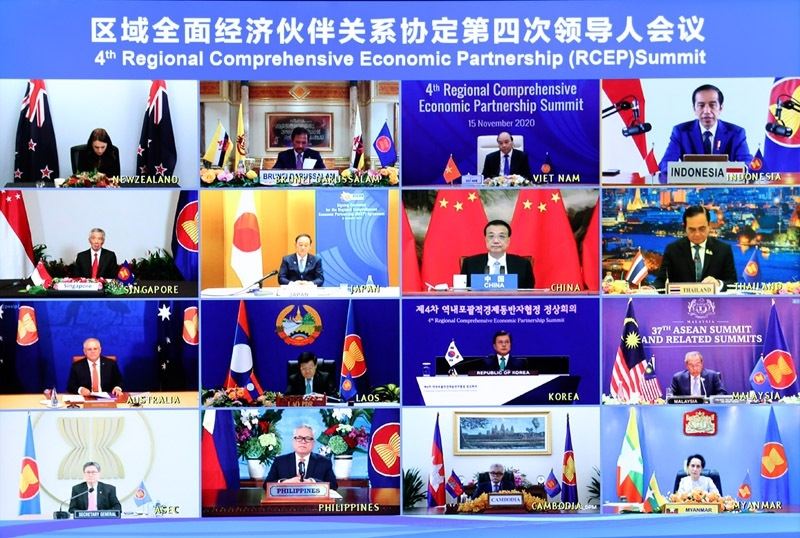On November 15th, the ten ASEAN countries and the five countries of China, Japan, South Korea, Australia and New Zealand formally signed the Regional Comprehensive Economic Partnership Agreement (RCEP). The world's largest free trade zone was born, which has a profound impact on China and the world economy. The economic scale of the region covered is approximately US$25.6 trillion, accounting for approximately 29.3% of the global economy; the intra-regional trade volume is US$10.4 trillion, accounting for approximately 27.4% of the total global trade; the radiation population is approximately 2.26 billion people, accounting for approximately 30% of the world’s population.
The RCEP agreement has a total of20 chapters, which mainly cover the four aspects of market opening for trade ingoods, trade in services, investment and temporary movement of natural persons,and include modernization topics such as intellectual property rights,e-commerce, and competition. Its main core lies in enhancing market opening interms of trade in goods, trade in services, investment, and the movement ofpeople. In particular, major breakthroughs have been made in tariffs and a"gradual" zero-tariff policy has been granted.

In recent years, the development of the LED industry has encountered barriers and obstacles such as raw materials, technological development, labor costs, demand markets, and trade policies. More companies have poured into this industry, with fierce competition and a red sea of market. The introduction of the "One Belt, One Road" policy has allowed more LED companies to see the future market development direction. Coupled with the policy dividend, more LED foreign trade companies have strengthened their determination to go overseas. In recent years, the LED lighting market has grown at a huge rate in ASEAN countries, up to 200%, far exceeding the growth rate in China. Through the development of upstream raw material technology and the mutual cooperation and learning between downstream manufacturers and traders, the LED display market has also ushered in another peak of development, especially the development of small-pitch screens and Micro soft screens. The signing of the RCEP agreement has further broken through trade barriers, strengthened human cooperation and enjoyed tariff policies. The demand market has further expanded, which is extremely beneficial to the production cost, market space and profit development of Chinese enterprises.
In the future, under the RCEP agreement and other policies, my country’s LED companies will further strengthen technical exchanges, strategic learning and cooperation with related companies such as Samsung, Sony and LG in Japan, South Korea, and achieve complementary advantages. At the same time, it will further develop the ASEAN market and use its labor costs, production capacity and growing market demand to achieve another peak in the development of the LED industry and further expand the international market.





